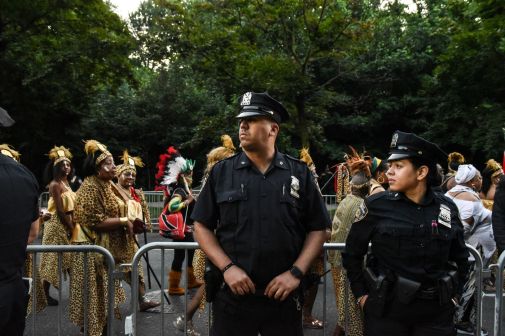Texas resurrects aerial drone program for emergency response

The Texas Department of Public Safety (DPS) has spent $70,000 for 17 drones in an attempt to resuscitate its aerial drone program for first responders.
The department reported the relaunch Thursday after pausing the drone program in August 2010 due to maintenance and operational issues. This time, DPS said it bought 17 drones that will be used to assist first responders with tasks like search and rescue missions, crime scene photography, communication tower inspections and surveillance during fires, floods and other disasters. The investment comes as many state and local government agencies, in law enforcement and otherwise, search for new applications for a technology that has in recent years become more affordable and versatile.
The most expensive purchased by DPS is the SkyRanger from Aeryon Labs for $48,000. The craft can fly for up to 50 minutes and be equipped with a camera adjust that can track a moving target. The SkyRanger also has zoom feature that can enlarge images by 30 times through its lens, and 60 times via digital zoom. Another feature also allows the craft to render 3-D images of landscapes.
DPS said in a release that the drones offer a number of advantages over traditional surveillance methods such as manned aircraft or officers on the ground. The drones can be deployed rapidly, they can scout dangerous locations that jeopardize an officer’s safety and their use is much more affordable compared to helicopters and planes.
“The UAS program will provide critical aerial support and will bolster the work of the existing DPS aircraft fleet, which includes fixed-wing airplanes and helicopters,” the DPS release notes. “With the addition of the Unmanned Aerial Systems program, the DPS aircraft fleet now totals 41 – with nine planes, 15 helicopters and 17 UASs.”
Records obtained by the Electronic Frontier Foundation show that the program had ended after DPS discovered that the drones, purchased from the vendor AeroVironment in 2007, were not powerful enough to fly in high winds. There were also frequent breakdowns and long waits for repairs. Making matters worse, the state paid $295,000 for AeroVironmnet’s faulty drone systems.
At the time, the intent of the program was to conduct covert surveillance of ongoing criminal investigations, to patrol the border, accident reconstruction and to assist first responders with surveillance when hazardous materials jeopardize safety.
DPS staff are already flying the drones under approval from the Federal Aviation Administration. Three employees have received certification that allows use during daylight hours. The department said that the drone operations will comply with the DPS drone policy, obey Texas laws, and ensure that residents’ privacy rights are respected.





